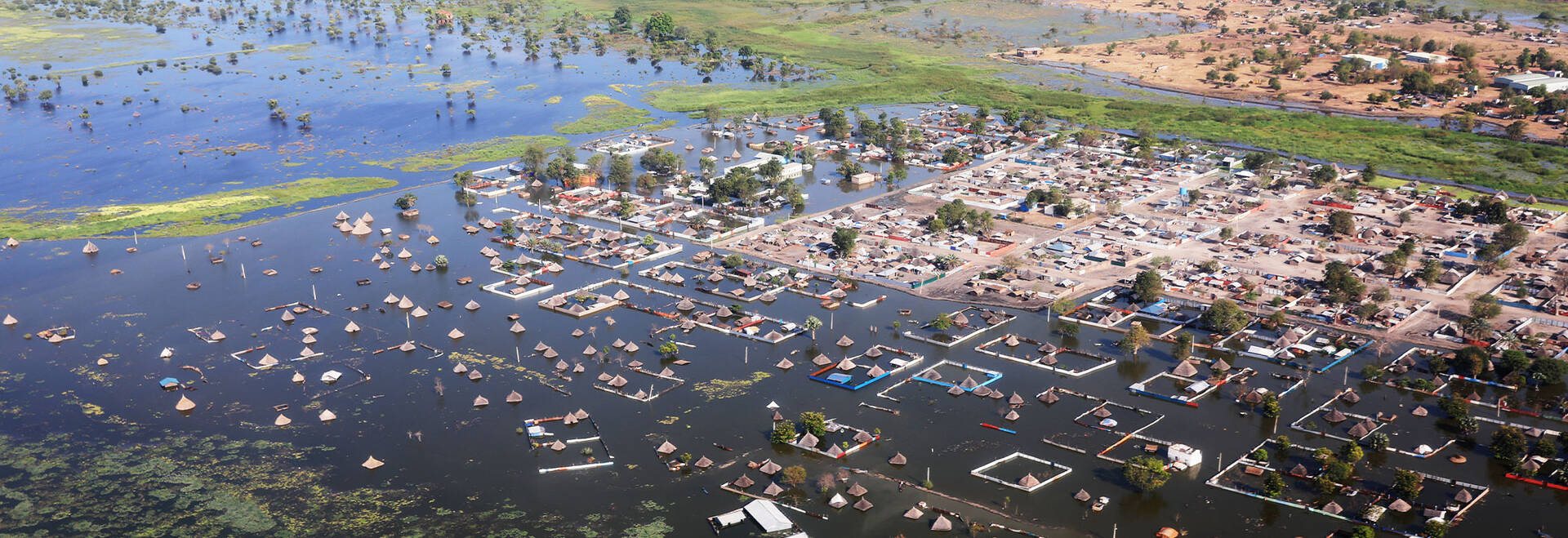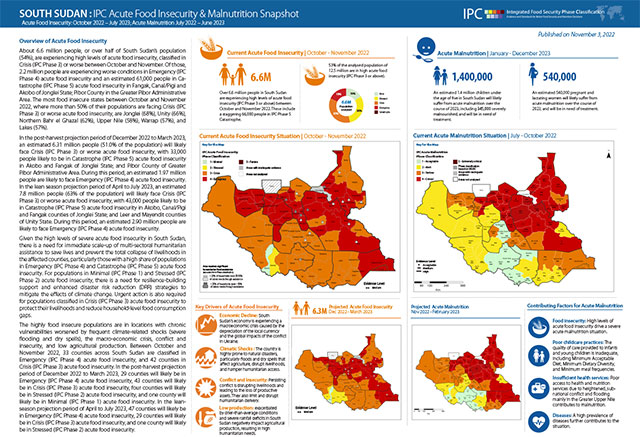South Sudan, November 2022

- © UNMISS
South Sudan’s acute food insecurity remains high due to the economic crisis, flooding, low production, conflict and insecurity; about 1.4 million children are acutely malnourished
Snapshot
About 6.6 million people, or over half of South Sudan’s population (54%), are experiencing high levels of acute food insecurity, classified in Crisis (IPC Phase 3) or worse between October and November. Of those, 2.2 million people are in Emergency (IPC Phase 4) acute food insecurity and an estimated 61,000 people in Catastrophe (IPC Phase 5) acute food insecurity, in Fangak, Canal/Pigi and Akobo of Jonglei State; and Pibor County in the Greater Pibor Administrative Area. The most food insecure states between October and November 2022, where more than 50% of their populations are facing Crisis (IPC Phase 3) or worse acute food insecurity, are Jonglei (68%), Unity (66%), Northern Bahr el Ghazal (62%), Upper Nile (58%), Warrap (57%), and Lakes (57%). In the post-harvest projection period of December 2022 to March 2023, an estimated 6.31 million people (51.0% of the population) will likely face Crisis (IPC Phase 3) or worse acute food insecurity, with 33,000 people likely to be in Catastrophe (IPC Phase 5) acute food insecurity in Akobo and Fangak of Jonglei State; and Pibor County of Greater Pibor Administrative Area. During this period, an estimated 1.97 million people are likely to face Emergency (IPC Phase 4) acute food insecurity. In the lean season projection period of April to July 2023, an estimated 7.8 million people (63% of the population) will likely face Crisis (IPC Phase 3) or worse acute food insecurity, with 43,000 people likely to be in Catastrophe (IPC Phase 5) acute food insecurity in Akobo, Canal/Pigi and Fangak counties of Jonglei State; and Leer and Mayendit counties of Unity State. During this period, an estimated 2.90 million people are likely to face Emergency (IPC Phase 4) acute food insecurity.
Download the Snapshot
IPC Classification Maps
Join our mailing list

